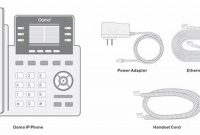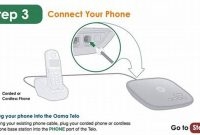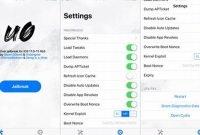If you have ever thought of creating your own phone app but have no idea how to go about it, this guide is for you. We will walk you through the entire process of creating a phone app step-by-step. Whether you want to create an app for personal use or for your business, you don’t need any prior programming experience. With this easy guide, you will be able to develop your own phone app in no time.

What are the Different Types of Phone Apps?
In today’s world, businesses need a mobile app to keep up with the competition. When building a phone app, one of the first things to consider is the type of app. There are several types of phone apps, including native apps, web apps, and hybrid apps.
Native Apps
A native app is a software application developed for a specific mobile operating system such as iOS or Android. Native apps are usually written using programming languages like Swift for iOS and Java for Android. Native apps are designed to run on the device, which makes them fast, responsive and provides an immersive user experience. Native apps also have access to device hardware and software such as camera, accelerometer, GPS, and others, which can provide robust functionality.
One disadvantage of native apps is that they’re more expensive to develop than other app types. Native apps also require separate development and maintenance for each platform, which can further increase cost.
Web Apps
Web apps are websites that are optimized to run on mobile devices. They are accessed by the user via a mobile web browser, but they’re designed specifically for mobile devices. Web apps look and feel like native apps, but they don’t need to be downloaded from an app store. Web apps are typically developed using web technologies such as HTML, CSS, and JavaScript.
One disadvantage of web apps is that they have limited access to device hardware and software, which can impact the functionality. Additionally, web apps require an internet connection to function properly, which can be a problem when network connectivity is poor or unavailable.
Hybrid Apps
Hybrid apps are a combination of native and web apps. They are built using web technologies like HTML, CSS, and JavaScript and then wrapped in a native app shell. Hybrid apps are developed once and then deployed to multiple platforms, which can be more cost-effective than building separate native apps.
Hybrid apps have access to device hardware and software, providing more robust functionality than web apps. Although they may not be as fast or responsive as native apps, the user experience is still better than web apps. Additionally, hybrid apps can function offline, which is an advantage over web apps.
- To summarize:
All three types of phone apps have pros and cons that need to be considered before choosing which one to develop. Native apps provide the best user experience but can be expensive to develop. Web apps are easier and less expensive to develop, but they have limited functionality. Hybrid apps are cost-effective and provide better functionality than web apps, but they may not be as smooth as native apps.
What are the Basic Steps in Creating a Phone App?
Creating a phone app requires a logical sequence of actions. Following the steps below will lead to your success in the creation of your phone app:
Ideation
The first step is ideation, which involves deciding what the app will do and how it will do it. You must also have a clear understanding of what your users need and what is missing in the app market. Brainstorming and researching existing apps can help you to come up with a solid idea. Ensure that you validate your idea by surveying potential users or consulting with industry experts.
Planning
The second step is planning, which involves defining the structure of your app and creating a product roadmap. Identify the features that you want to include and create a detailed document with specifications for each feature. Determine the technology stack, architecture, and external APIs to build your app. The App Store and Google Play Store have strict guidelines that you must follow, so review them before creating your plan.
- Create a “user flow” diagram that specifies the sequence of actions a user will take when they interact with your app.
- Sketch a “wireframe” that shows the basic layout of your app and how different screens are connected.
- Create a “mockup” that captures the visual design of your app.
- Create a “prototype” that brings your wireframe and mockup together so that you can test your ideas with real users.
Designing
The third step is designing, which involves creating the visual look and feel of your app. Your app should be designed for optimal user experience, so consider the user interface (UI), user experience (UX), and brand identity. Ensure that your app’s design is consistent with the brand and target users. Remember to keep things simple and intuitive.
Developing
The fourth step is developing, which involves coding your app. The programming language and development framework that you choose depend on the platform you want to develop your app for (iOS or Android). Ensure that you have a version control system in place for tracking code changes. Test and debug your code regularly to prevent problems. You can also use various tools and services to make your development process easier and more efficient, such as app templates, libraries, and developer forums.
Testing
The fifth step is testing, which involves rigorously testing and debugging your app to iron out any bugs and ensure it performs optimally. To identify potential issues with your app, test it on different devices, operating systems, and connectivity conditions. You can also use automated testing frameworks to carry out unit tests, UI tests, and integration tests. Ensure that your app meets industry standards and guidelines. Apple uses the Human Interface Guidelines and Google uses Material Design Guidelines.
Launching
The final step is launching your app on the App Store or Google Play Store. Before submitting your app, ensure that you have met all app store requirements and have tested your app to verify that it meets all guidelines. Ensure that your app’s branding and promotional materials are in place. When launching the app, ask users for feedback to get an idea of what you’ve done well and what you can improve.
How Can You Choose the Right App Development Platform?
Choosing the right app development platform is a critical decision that will significantly impact the success of your app. Before creating an app, there are various factors that you should consider to select the best development platform that suits your needs. Here are some of the tips to consider:
1. Determine Your Target Audience
The choice of app development platform largely depends on the target audience. For instance, if your audience primarily uses iOS devices, then an iOS app would be more appropriate. On the other hand, if your target audience consists of Android users, then an Android app would be suitable. It’s crucial to conduct thorough research to identify the platform that your target audience uses the most.
2. Analyze Your Budget
The app development cost can vary depending on the platform you choose. Native app development is typically the most expensive, followed by hybrid development. Web app development is relatively affordable compared to the other two. If you have a considerable budget, you can opt for native app development that provides a premium user experience. However, if your budget is limited, you can choose web app development, which is more cost-effective.
3. Consider the App Features and Frameworks
Another crucial factor to consider when choosing a development platform is the app’s features and functionalities. If your app requires access to native hardware sensors and features, then native development would be the best option. However, if your app doesn’t require complex functionalities, web app development would suffice. Hybrid app development is an excellent choice if you want to balance native and web development and create an app that works well across different platforms.
When it comes to frameworks, there are various options available to choose from. Some of the popular ones for native app development are Xcode (for iOS), Android Studio (for Android), and Windows App Studio (for Windows). For hybrid app development, frameworks like React Native and Ionic provide a robust alternative. For web app development, popular frameworks include Angular, React, and Vue.js.
By considering these factors, you can select the appropriate development platform that aligns with your goals and objectives. Keep in mind that each platform has its advantages and disadvantages, so choose the one that best suits your needs and budget.
What is the Importance of UI and UX Design in Mobile App Development?
When it comes to mobile app development, UI and UX are two critical components that influence how users interact with the app. UI, or User Interface, refers to the visual design of the app, including the layout, buttons, and overall look and feel. UX, or User Experience, is how users interact with the app and their overall satisfaction with the app’s usability and functionality. Here are a few reasons why UI and UX design are crucial in mobile app development:
1. Enhance User Engagement
A well-designed UI and an intuitive UX can increase user engagement. When users find an app easy to use and visually appealing, they are more likely to spend more time on the app and return to it in the future. On the other hand, if an app is difficult to navigate, users are likely to abandon it quickly.
2. Improve User Satisfaction
UI and UX design can significantly impact user satisfaction. When an app is easy to use and meets users’ needs, it can enhance their overall satisfaction. Positive feedback and ratings can boost the app’s ranking in app stores, leading to higher visibility and downloads. In contrast, if users struggle to use the app and cannot accomplish their tasks, they are likely to be disappointed and leave negative feedback in app stores.
3. Enhance Usability
A good UI and UX can make an app more usable. An app that is easy to navigate and understand can help users to achieve their goals effectively. An intuitive design can reduce the time required to learn how to use an app and eliminate frustration, leading to a positive experience that promotes app engagement.
4. Provide a Competitive Advantage
A well-designed UI and UX can give an app a competitive edge in a crowded app market. When users have multiple options to choose from, they are more likely to select an app that is visually appealing and easy to use. A poorly designed app will lose out to better-designed and more user-friendly competitors. Creating a great UI and UX can also help to promote brand awareness and loyalty, leading to more returning users and referrals.
How Can You Monetize Your Phone App?
Developing a phone app certainly requires a lot of work but it could pay off in the end. One way to earn money from it is by monetizing it and generating income. Here are five of the most common ways to monetize a phone app:
In-App Purchases
If you have a gaming app, providing in-app purchases can be the perfect way to generate revenue. Users can make purchases within the app, such as unlocking extra features or buying virtual coins for gameplay. You can also offer subscription-based services like a premium membership or a music streaming service.
Advertising
Placing ads on your phone application is another way to generate revenue. By displaying ads to users, companies can pay you to reach their target audience. Keep in mind that users might find it irritating to see ads, so it is always important to strike the right balance by not overwhelming them with too many ads.
Sponsorships
Partnering with a company and offering them exposure in your app can be very lucrative. By featuring their product within your app, you can earn money for each installation of their item. For example, you can collaborate with a food delivery app and get paid for introducing their service to your users.
Affiliate Marketing
Affiliate marketing involves promoting another company’s products or services in exchange for a commission. You can earn a percentage of a sale when a user makes a purchase from an advertiser in your app. This model works well for apps that focus on a particular niche or industry as you can target your audience better.
Selling Your App
Last but not least, you can always sell your app. This might be a viable option if you have already built a solid user base, and your app is generating enough revenue to sell it for a profit.
There’s no one-size-fits-all method when it comes to monetizing your app. By exploring these options, you can choose the right method for your app based on its features, the user-base, and the services offered.
Best Practices for Phone App Marketing
Creating a phone app is just the beginning. Without proper marketing, your app may never get the visibility it needs to succeed. To ensure the success of your app, you should follow these best practices for phone app marketing:
Conduct Market Research
Market research should be your first step when creating a phone app. By understanding your target audience, you can develop a marketing strategy that resonates with them. Research your competitors to determine what they are doing right and wrong. By understanding the competition, you can offer something unique and better.
- Identify your target audience: Develop an ideal customer persona and understand what motivates them.
- Conduct competitor research: Determine what competitors are doing a lot better than you and what they are doing worse for you to capitalize on
- Look for opportunities: Identify gaps in the market that can add value to your app and fill them.
Optimize Your App Store Listing
The app store is where users will find your app, so having a well-crafted listing is critical. This will help users to understand the app’s features and benefits that address their needs. Your app store listing should be optimized for both search engine optimization (SEO) and conversion. The app store algorithm can identify relevant searches for the app to appear in.
- Title and description: Ensure that your title communicates your app’s purpose, and the description accurately describes the features in a way that is easy to understand.
- Keywords: Incorporate relevant keywords in your app’s title, description, and metadata. This way, users can easily find your app when searching for specific topics.
- Images and videos: use engaging and captivating images and videos to provide visual explanations of your product. Users are attracted to a well-designed app.
Leverage Social Media and Influencer Partnerships
Social media is a valuable tool for promotion, and influencer partnerships can provide additional support and credibility. Social media allows app developers to interact with their existing and potential users on a more personal level, showcase their product, and reach new audiences. Influencers have established trust with their followers, which can help your app to gain credibility.
- Social media: Maintain social media campaigns and consider paid advertising to broaden reach and generate leads.
- Influencers: Conduct research and partner with an influencer or blogger that embodies the spirit and purpose of your app. This way, their endorsement will carry weight with their audience.
Analyze Your App’s Performance Using Analytics Tools
Analytics tools help app developers to monitor the app’s performance, tweak marketing strategies and identify areas where they need to focus on improvement. Identifying customers’ patterns, behaviors, and needs can be rewarding for optimizing the app and business growth. This can help to inform and adjust your marketing efforts to ensure the long-term success of your app.
- Session data: Look at user sessions to observe whether they are spending enough time on the app
- User Retention: Analyze how long our users stay engaged with the app and why they stopped using it.
- Conversion rates: Rate how many downloads convert into paying customers/consumers. Evaluate discount offers, prices and among other factors to see what appeals to your target audience.
Create Quality Content for Your App
Creating quality content encourages users to return to the app and use it regularly. You can keep existing users engaged by regularly adding new features, updates, and promoting your app with engaging and informative content. Communication is key in any successful marketing effort, and quality content helps to keep users informed of those updates.
By employing these best practices for phone app marketing, you can increase the exposure of your app to the target audience, thereby encouraging downloads and reviews that can propel your app to the top of the app store charts.
Frequently Asked Questions
| Questions | Answers |
|---|---|
| Can I create a phone app without coding skills? | Yes, you can use app builders like Appy Pie or BuildFire. |
| How much does it cost to create a phone app? | It depends on the complexity of the app and the developer’s rates. You can expect to pay anywhere from $5,000 to $500,000. |
| What platforms can I create an app for? | You can create apps for iOS, Android, and even web apps. |
| What are some popular app builders? | Some popular app builders include Appy Pie, BuildFire, and AppMakr. |
| Do I need to hire a developer to create an app? | No, you can use app builders like Appy Pie or BuildFire to create an app without coding skills. |
Thank You for Reading!
Creating a phone app can be a fun and rewarding experience. With the help of app builders like Appy Pie or BuildFire, you can create a custom app without coding skills. If you have any questions or comments, feel free to leave them below. And don’t forget to check back for more informative articles!





